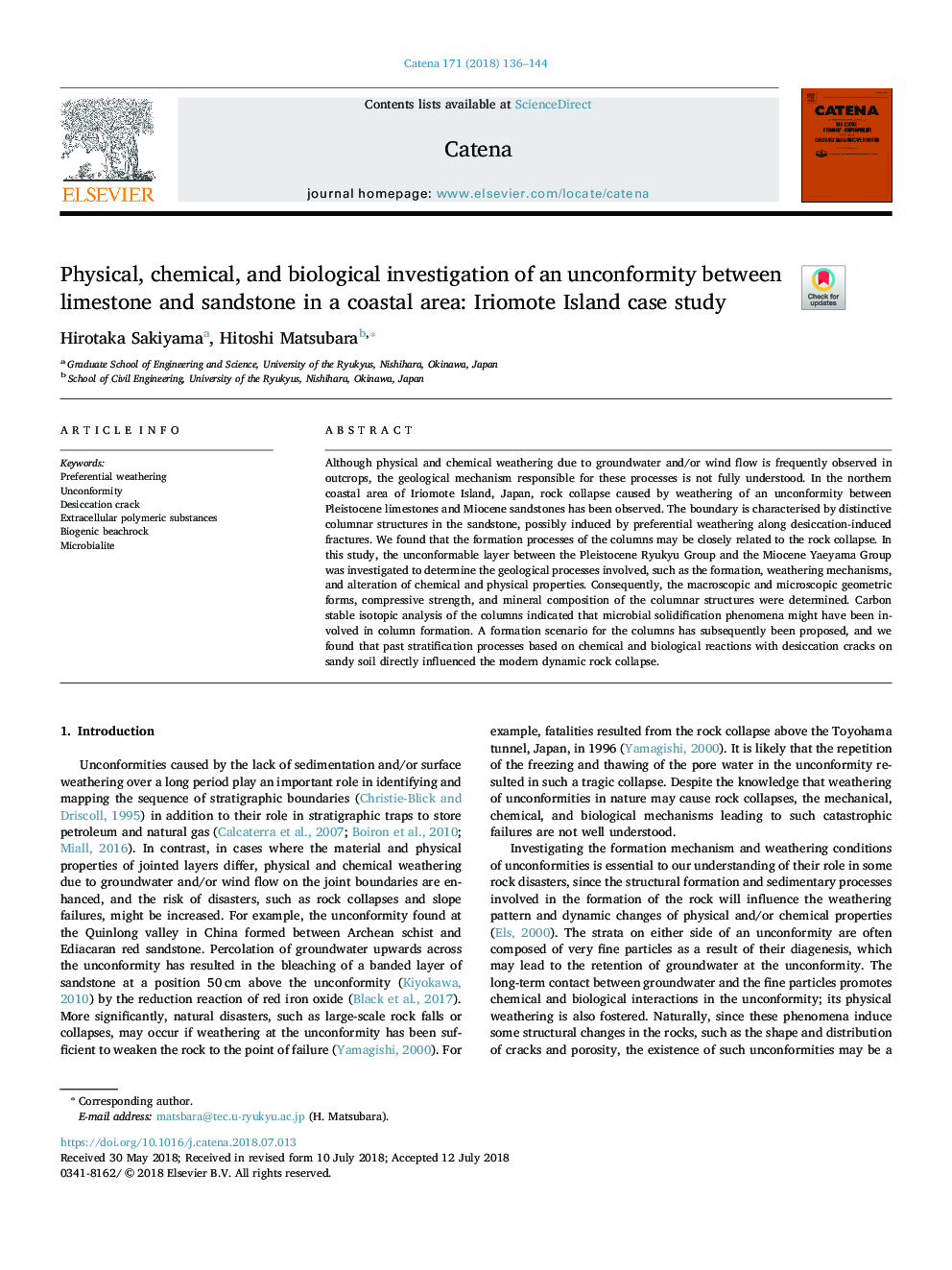| Article ID | Journal | Published Year | Pages | File Type |
|---|---|---|---|---|
| 8893341 | CATENA | 2018 | 9 Pages |
Abstract
Although physical and chemical weathering due to groundwater and/or wind flow is frequently observed in outcrops, the geological mechanism responsible for these processes is not fully understood. In the northern coastal area of Iriomote Island, Japan, rock collapse caused by weathering of an unconformity between Pleistocene limestones and Miocene sandstones has been observed. The boundary is characterised by distinctive columnar structures in the sandstone, possibly induced by preferential weathering along desiccation-induced fractures. We found that the formation processes of the columns may be closely related to the rock collapse. In this study, the unconformable layer between the Pleistocene Ryukyu Group and the Miocene Yaeyama Group was investigated to determine the geological processes involved, such as the formation, weathering mechanisms, and alteration of chemical and physical properties. Consequently, the macroscopic and microscopic geometric forms, compressive strength, and mineral composition of the columnar structures were determined. Carbon stable isotopic analysis of the columns indicated that microbial solidification phenomena might have been involved in column formation. A formation scenario for the columns has subsequently been proposed, and we found that past stratification processes based on chemical and biological reactions with desiccation cracks on sandy soil directly influenced the modern dynamic rock collapse.
Related Topics
Physical Sciences and Engineering
Earth and Planetary Sciences
Earth-Surface Processes
Authors
Hirotaka Sakiyama, Hitoshi Matsubara,
